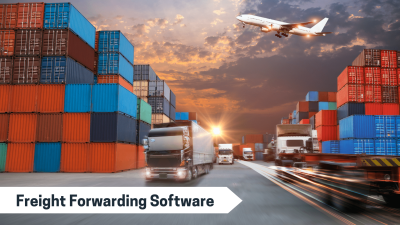By definition, the procedure by which a company operates a sales order to the customer’s requirements, that downplays its importance is called order fulfillment.
Nowadays, customers have more power, higher expectations, and are more informed. So, order fulfillment or having logistics management systems can be really beneficial for your brand’s reputation. Not to mention, it can help you in increasing your company’s profits and your ability to enhance customers.
Without order fulfillment, there are no sales, and no sales mean no business.
What is Order Fulfillment?
Every sale, especially a new one needs celebration, but only then starts the real work of order fulfillment— from warehouse to customer’s doorstep. And order fulfillment is one of the crucial tasks where assembling and shipping of the order are done, adding it with supporting tasks that help in it.
In a nutshell, it is a procedure of receiving orders/packages, then processing, and delivering them to customers. This procedure begins when customers place an order and ends when they receive it. In case, the customer wants to return or exchange the product, the return transactions are also managed by order fulfillment.
The order fulfillment steps include:
1. Receiving Inventory Shipments:
Whether the orders/goods are from a third party, another brand’s department, or a warehouse; as digital data from a database; or in different forms from various sources— external or internal.
No matter in what shape or type of order, the incoming inventory should be counted, inspected, and checked to make sure the proper amount of receiving and its quality. Additionally, bar codes are to be used on arriving goods in the procedure of receiving, storage, and retrieving products from the storage when required.
2. Inventory Storage:
After receiving the products in the fulfillment center, the orders are listed or instantly sent to short or long-term storage. Usually, then items are stored just for a short period of time rather than holding them so that it can help with the organizing of orderly distribution of products, which is required for existing sales.
3. Order Processing:
The system of order processing management consists of picking and packing activities of goods per each newly received order from the customer. In the online market, the order management software or freight management software can be easily merged with the shopping cart, whereas in the case of the eCommerce website, it can automatically start order processing.
4. Shipping:
In this method, the order is sent to the transportation management or shipping channel to be shipped to the customer. It could be done by freight lines airlines or any other carrier.
Although most carriers have certain packaging rules which are to be followed religiously because these rules help them to increase their own profits from the availability of shipping space they have. And not following the given guidelines can delay shipments if carriers refuse to accept the package/order.
5. Returns Processing:
Typically, the procedure of returning goods starts with shipping materials and the return label with the customer’s original order. When customers apply for a product return, exchange, or refund, the whole process should be carried out properly to make sure the item is appropriate to restock. And if the item malfunctions or is broken, then it can’t be restocked.
This is why returning procedure involves quality control checks and sorting out so that it can be dealt with accordingly.
Order fulfillment is considered one of the most complex and expensive processes in logistics. This is why some businesses prefer to have an in-house freight management system; that includes order fulfillment, whereas other businesses opt for a reputed third-party logistics company like BoxOn Logistics.
On that note, let’s take a look at some of the challenges related to order fulfillment.
Challenges of Order Fulfillment:
Surely, it is not as easy as it looks to execute an effective order fulfillment procedure. Companies could face various challenges with demand, inventory management, and logistics planning.
The following are some of the common challenges faced during order fulfillment:
1. Inventory Management:
Running out of stock is one of the most common ways of losing customers. However, you don’t need to worry, if your business maintains good inventory levels, if not then it is high time to do that. Otherwise, you will easily lose your clients to your competitors due to stockouts.
2. Demand Planning:
It is crucial for you to know the market demand for your product. It will eliminate your risk of overstocking, which can be expensive for you.
3. Logistics Planning:
The shipping process is as necessary as the sale. So, you need to make sure the shipping methods that you use should be quick and reliable. Otherwise, there is a high risk of late, broken, or missing goods— that can hurt your brand’s reputation and your sales.
Therefore, whether you opt for outsourcing to a good logistics company like BoxOn or use a hybrid warehouse management solution, the important thing is to find the right method to fulfill your and your company’s requirements.
So, contact us today! And discuss the various types of solutions with us. https://www.boxonlogistics.com/request-demo/






COMMENTS